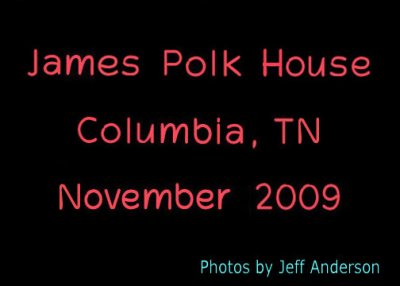
James Polk House in Columbia, TN cover page. |
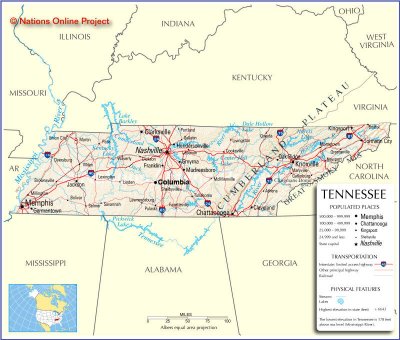
Map of Tennessee showing Columbia. |
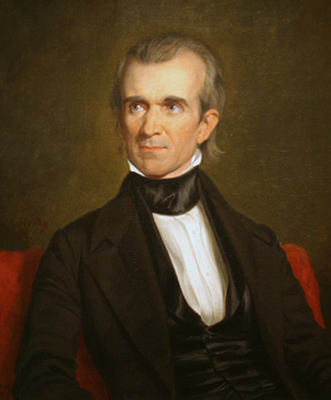
Oil painting of James K. Polk by Minor K. Kellogg, painted around 1840, when Polk was about 45. |
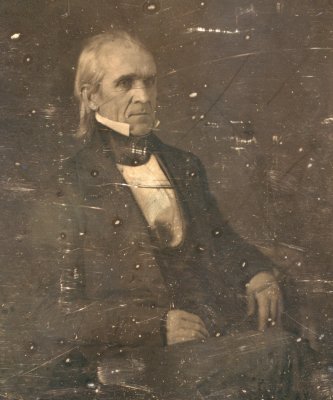
1849 daguerreotype taken by Matthew Brady of a worn out and much older-looking Polk. It was taken shortly before Polk's death. |
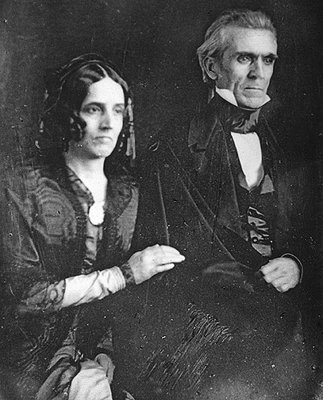
Daguerreotype of Sarah and James Polk taken around the same time. |
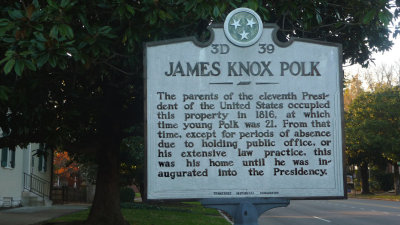
Sign indicating that the James Polk house belonged to his parents. It was built by his father, Samuel, around 1816. |
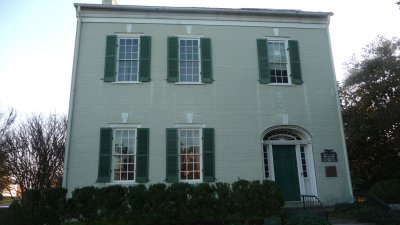
Façade of the the Federal style house. It is the only remaining residence of James K. Polk, except for the White House. |
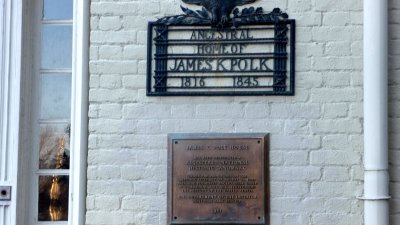
The plaque on the door state that it was James Polk's ancestral home from 1816 until 1845. |
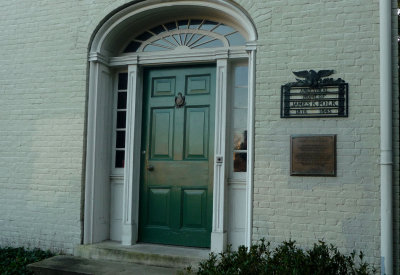
The front door of the James Polk house. |
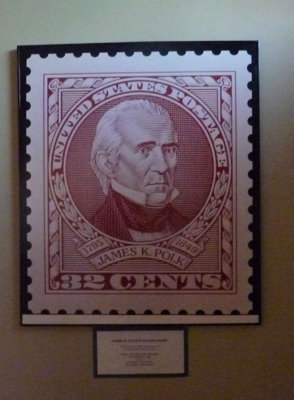
There is a museum next door to the house. A commemorative postage stamp of James Polk. He is an underrated president. |
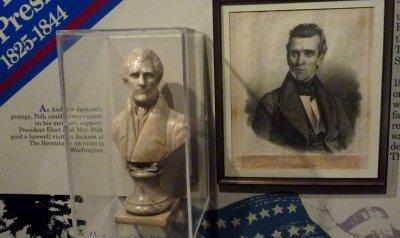
Statue of Andrew Jackson who known as "Old Hickory," was the mentor of James Polk. He was known as "Young Hickory." |
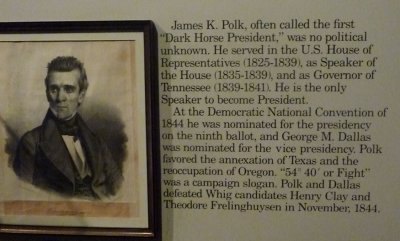
James Polk is called the first "Dark Horse President." In the 1844 Democratic Convention, he was nominated on the 9th ballot. |
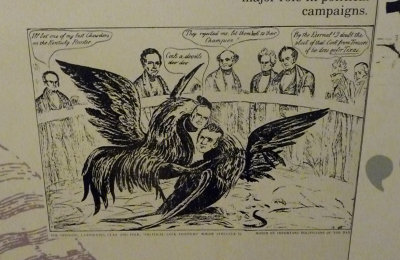
A political cartoon showing James Polk fighting it out with Henry Clay, his Whig opponent. |
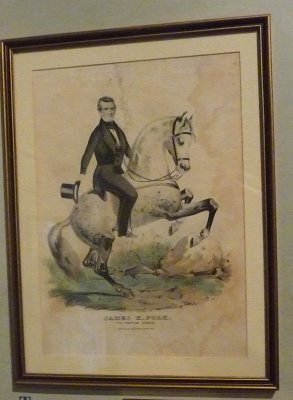
A portrait of a dashing James Polk on his horse. |
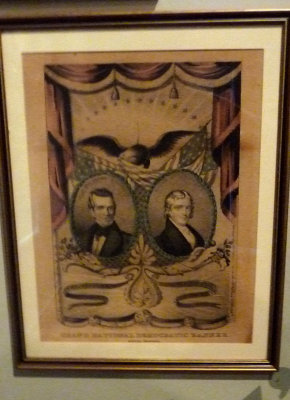
Campaign picture of James Polk and his Vice Presidential running mate, George M. Dallas. |

James Polk is said to be the only president who kept all of his campaign promises. |
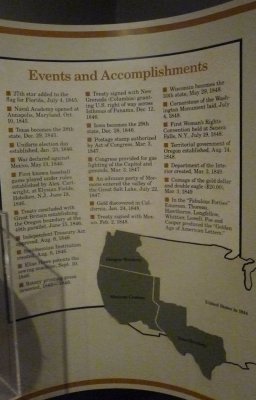
An exhibit in the museum listing the events and many accomplishment that took place during his administration. |
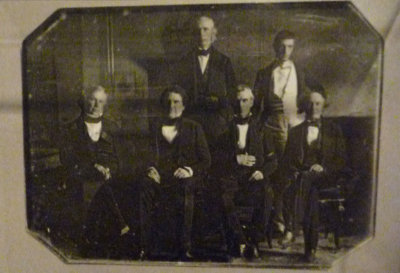
A daguerreotype of James Polk and his cabinet. It is the earliest photograph of the interior of the White House. |
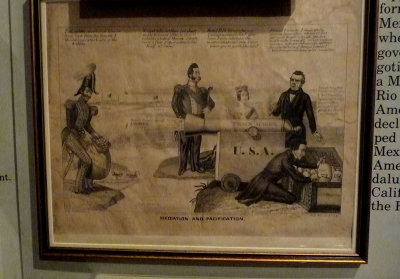
Political cartoon showing that James Polk's idea of mediation was using force. |

When Mexico refused to negotiate regarding the purchase of New Mexico and California, it resulted in the Mexican American War. |
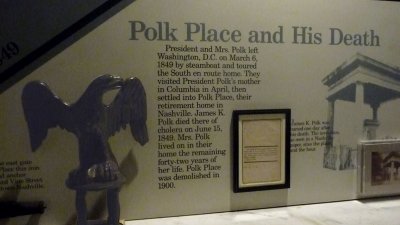
Three months after he left the presidency, James Polk died of cholera. The presidency took a great toll on him. |
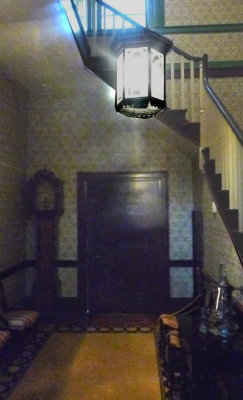
Front hallway of the house. James Polk lived here from the time that he graduated from college until he was married. |

This light has gone through many transformations, from a candle holder, to burning whale oil, and, now, it is electrified. |
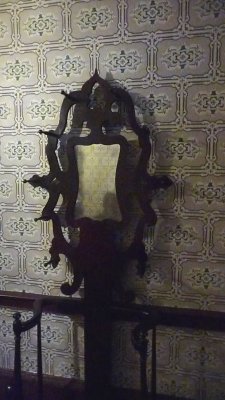
This mirror was originally in the hallway of the home where James Polk had planned to retire in Nashville. |
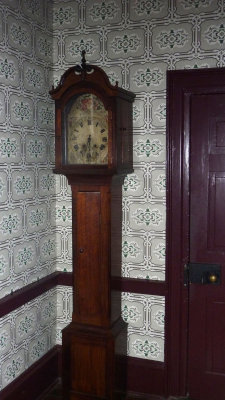
A grandfather clock in the front hallway of the house. |
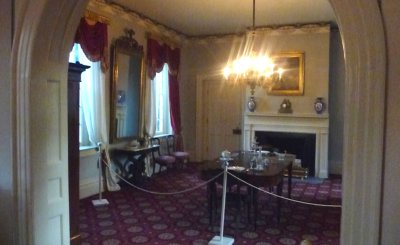
Most of the furnishings in the house are original including some that were in the White House during his term. |
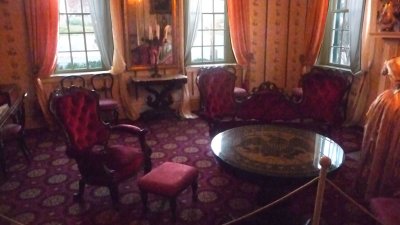
The salon with authentic period pieces that belonged to the Polk family. |
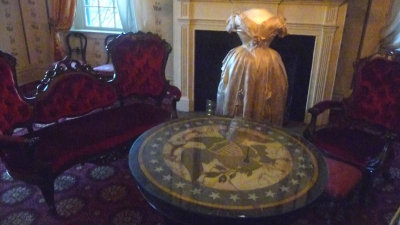
This American eagle table has 30 stars for the 30 states in Polk's day. It is made of Egyptian marble. |
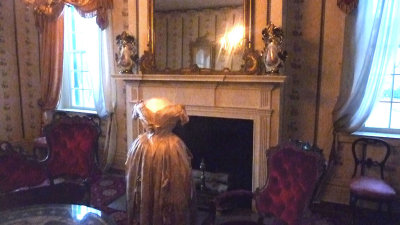
View of other furnishing in the salon and of the fireplace. The house was heated by the fireplaces when Polk lived here. |
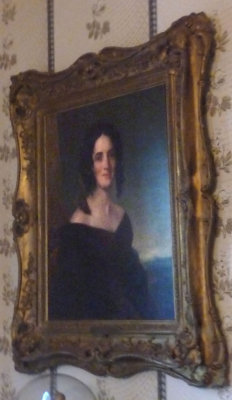
Portrait of Polk's wife Sarah, who lived on 42 years after her husband's death. |
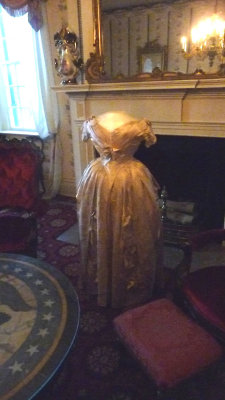
Sarah's inaugural gown. She was an educated woman and surprised people by her interest in fashion and finery. |
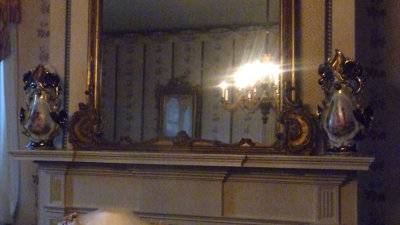
The mantel in the salon with decorative ceramic vases. |
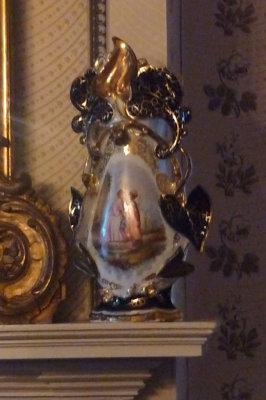
These French imported ceramic vases were purchased by Sarah in a store in New York called "Stewarts," when she was First Lady. |
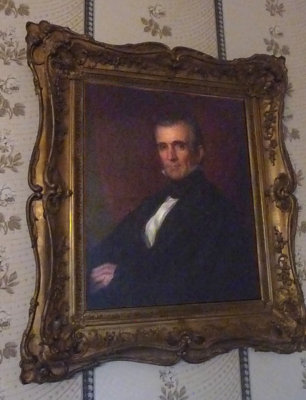
Portrait of James Polk at aged 50. |
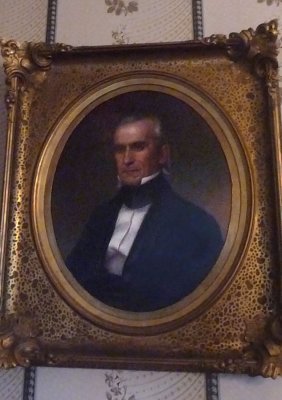
Another portrait painted 3 years later at age 53, showing how the Presidency had aged him. He worked himself to exhaustion! |
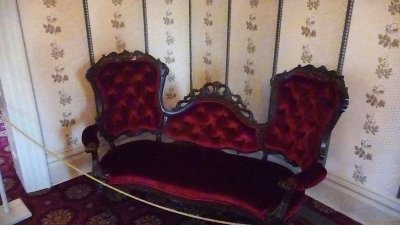
This curved red velvet couch was acquired by Sarah when she was in the White House, although it was not used there. |
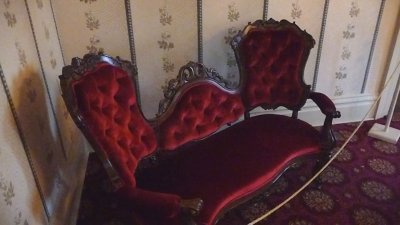
John Henry Belter's NY company perfected this curved wood technique at that time, the antithesis of heavier the Empire Style. |
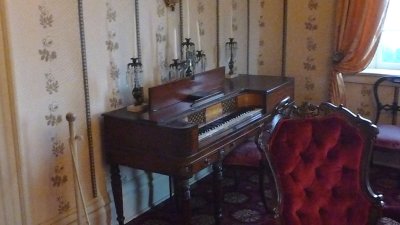
An original piano that belonged to the Polk family. |
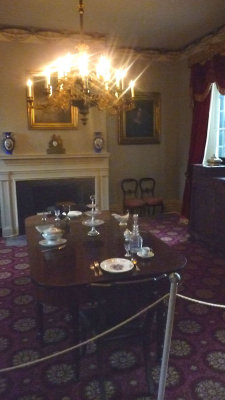
The dining room which has the original china from the White House. |
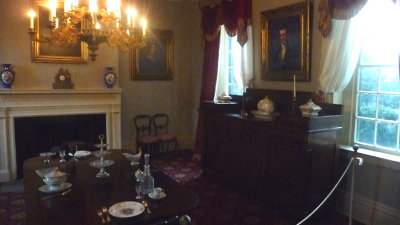
The room is small by the standards of Andrew Jackson's home, since Columbia was a frontier town when the house was built. |

An elegant formal chandelier hangs over the dining room table. |
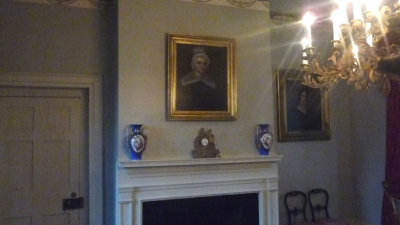
Portrait of James Polk's mother, Jane Polk, over the fireplace. |
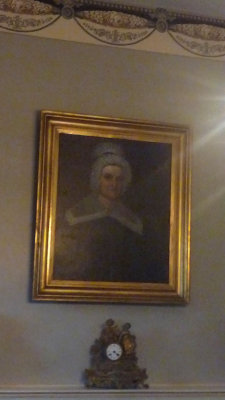
Jane Polk lived into her 70's, and outlived her husband and 7 of her 10 children. The 1840's clock beneath her still works. |
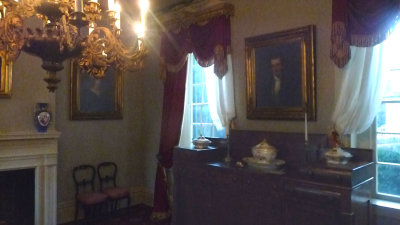
Sideboard, portrait and other furnishings in the dining room. |
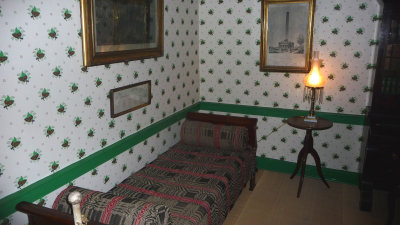
In this 2nd story office, the wallpaper is not original but is of that period. It is called "block style" paper. |
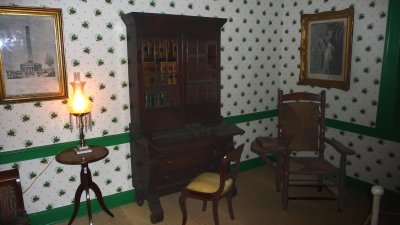
The green trim is the original color that was used in this room. Originally the room was a bedroom. |
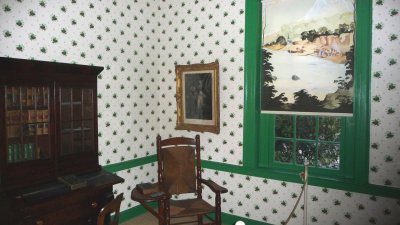
Reproduction of the painted window shades that were very popular in James Polk's time. They tend to fade in the sunlight. |
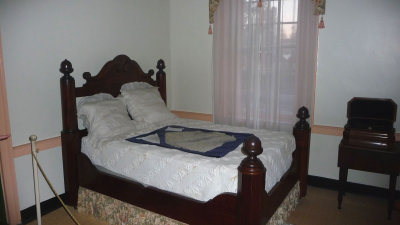
Bedroom that was used by Sarah. The fabric on top of the bed was a doily that Sarah wore over her dress. |
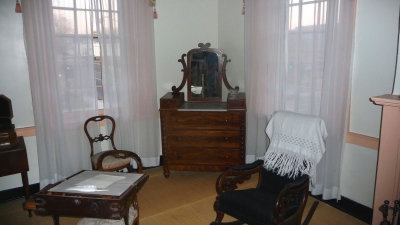
The room contains some of her jewelry in a jewelry box and a traveling desk in the center of the room. |
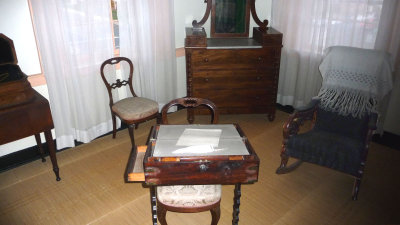
The traveliing desk was on a stand. It came in handy during the 12 to 14-day journeys to Washington, D.C. |

This was originally a trunk room or a storeage room. These are the President's smoking jacket and one of Sarah's dresses. |
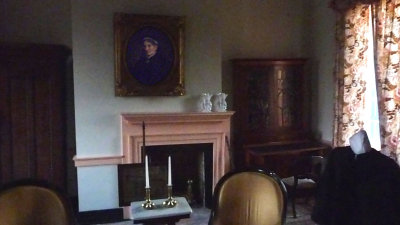
In this bedroom, is a portrait of Sarah painted 30 years after James' death, looking like she was still in mourning. |
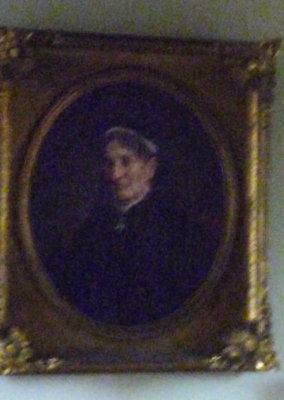
Sarah was in her mid-70's when this portrait was painted. She died in 1891 at age 87. |
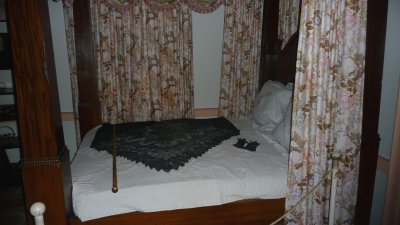
This was James Polk's parents' bedroom. |
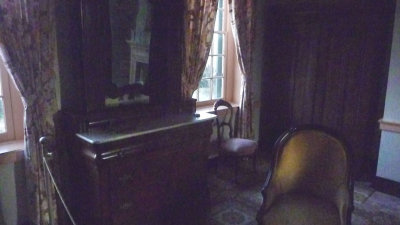
The furniture in this room belonged to Sarah and is from Sarah's widowed years. |
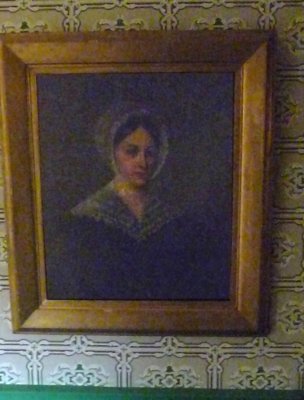
Portrait of Sarah's sister hangs in the second floor hallway. |
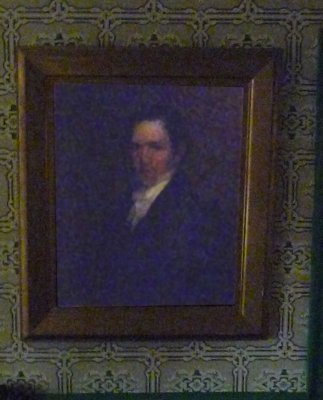
Sarah's sister was married to this man, a Nashville doctor. |
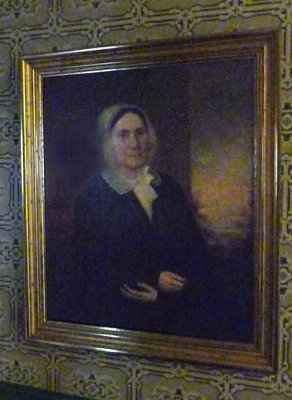
This is a portrait of Sarah mother, Mrs. Elizabeth Whitsitt Childress, who was from nearby Murfreesboro, Tennessee. |
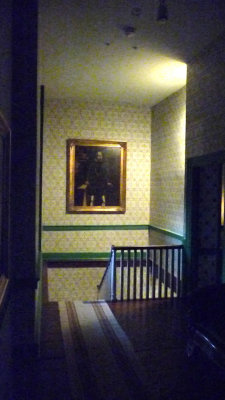
Portrait of Hernán Cortés, the Spanish conquistador. His conquests caused the fall of the Aztec Empire in Mexico. |
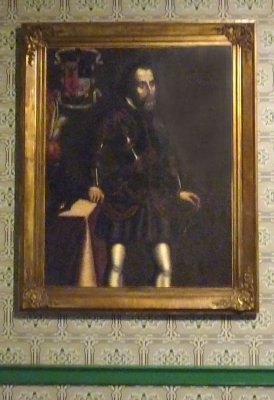
It was appropriate for Polk to hang it. During the U.S. Mexican War, his troops used the same path to Mexico City as Cortés did. |
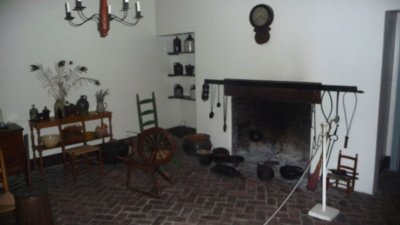
Behind the James Polk house is the kitchen, in a separate building. |

It was common in the 19th century for the kitchen to be separated from the house for protection from fires. |

The kitchen's furnishings were typical for that time. |
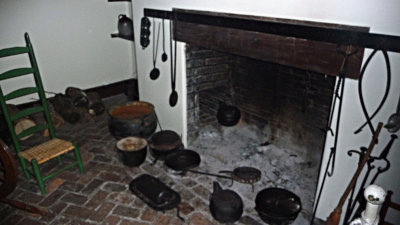
Cooking utensils and pots in front of the fireplace in the kitchen. |
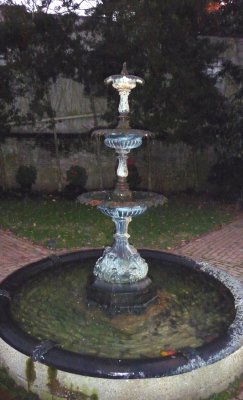
Behind the James Polk house and the museum next door is this fountain. |
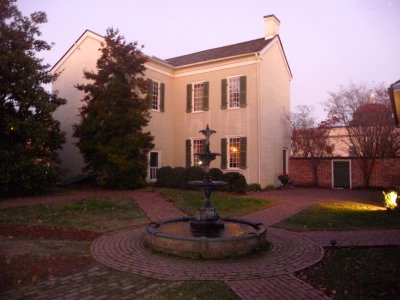
A rear view of the house with the fountain in the foreground. |
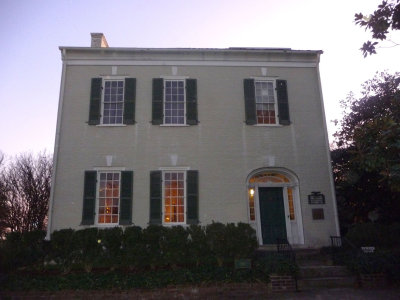
The façade of the James Polk house at dusk. The visiting hours were over, so it was time to leave. |











